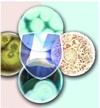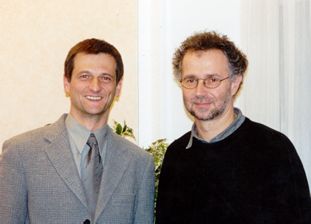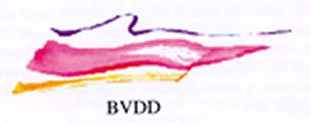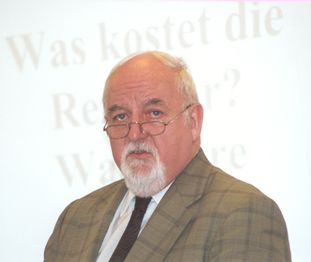

GD — Society for Dermopharmacy
 |
|
|
Extemporaneous Preparations
Dermatologists and pharmacists in Discussion
Cooperation for the Solving of Prescription Problem
In the course of an interdisciplinary consensus conference organized by the Gesellschaft für Dermopharmazie (Society for Dermopharmacy) end of 1998, guidelines were adopted containing principles of the prescription, preparing and depositing of dermatological prescriptions. The elaborated basic paper has been published in several professional journals and in the GD-homepage (www.gd-online.de). In this paper the chambers and professional associations of physicians and pharmacists are called upon to push forward the practical implementation of the adopted principles at the basis by taking the necessary measures as to professional continuation events. A step in this direction was a four-part event of advanced education for dermatologists and pharmacists which took place in Ratingen last year. This event was jointly organized by the professional association of the Deutsche Dermatologen [BVDD] (German Dermatologists) and the Apothekerverband Nordrhein (Pharmacists' Association North Rhine) in coordination with the GD.
The start of the series of events, in the chair of Dr. med. Klaus Strömer, Mönchengladbach, (for the BVDD), and Dr. Wolfgang Boventer, Krefeld (for the Pharmacists' Association North Rhine), were plenary lectures by professor Dr. med. Max Gloor, director at the Hautklinik of the Städtische Klinikum, Karlsruhe (Dermatological Clinic of the Municipal Clinical Center), and the GD president, pharmacist, Dr. Joachim Kresken, Viersen. While Kresken presented the principles of prescription, preparation and depositing of dermatological formulations, Gloor expounded the significance of the extemporaneous preparation for the dermatologist. He equally expressed his positive opinion towards the prescription, which he considers to be a mark of quality, in an interview already published in October last year in the print- as well as in the online-version of DermoTopics.
 The GD-members Dr. med. Klaus Strömer (left), dermatologist from Mönchengladbach, and Dr. Wolfgang Boventer, pharmacist from Krefeld, initiated and chaired the interdisciplinary series of continuous courses certified with in total ten professional training credits. |
Extemporaneous Preparation:
Quo vadis?
Like Gloor, Kresken, in his function as a pharmacist, equally expressed himself principally in favor of the quality-ensured magistral prescription. The considerable increase of prescriptions - according to statements of the pharmaceutical industry, are at present over 50 percent of all dermatological prescriptions formulations for medical purposes. Kresken looks upon this figure, however, as being exaggerated and not justified in the therapeutical sense. Responding to the question to what extent the effectiveness of extemporaneous preparations has been proven by controlled clinical studies, Kresken explained that to date only very few corresponding studies have been performed. Efforts undertaken by the GD to initiate further studies have failed due to financial reasons up to now. "In the sense of an evidence-based medicine, potency proofs from controlled clinical studies will be required for extemporaneous preparations in the long term", Kresken emphasized. He made an appeal to dermatologists and pharmacists to exert themselves for the realization and financing of such studies, since the conservation of the prescription is finally also of importance out of profession-political reasons. "Not only the dermatologists but also we ourselves as pharmacists need the prescription. It represents an important argument for the public pharmacy and against the mail-order business with drugs", Kresken pointed out.
 |
The additional subjects of the series of events have been treated in workshops, at which approximately 20 dermatologists and 20 pharmacists took part respectively. In the first workshop dermatologically problematic prescriptions and prescription problems with solution attempts have been presented by GD-member of the board, Dr. Holger Reimann, Eschborn, the leader of the pharmazeutische Laboratorium of the Neue Rezeptur-Formularium [NRF] (Pharmaceutical Laboratory of the new Prescription Formulatory) by using specific examples. In this context the participating dermatologists could submit own prescriptions before the start of the workshop which have then been assessed by Reimann regarding their galenic compatibility. Practical exercises formed the center of interest of the second workshop in the course of which Dr. Wolfgang Boventer, pharmacist Michaela Tünnermann and other pharmaceutical colleagues demonstrated the realizable pharmaceutical quality of dermatological prescriptions in a modern public pharmacy today. Furthermore, up-to-date packing materials for prescription drugs have been presented in this workshop.
In the concluding third workshop mainly questions concerning the economic efficiency of the extemporaneous preparations were addressed. The competent lecturers invited to discuss this topic were Dr. Robert Fuhrmanns, Euskirchen, a practising dermatologist and Ulrich Schwier, Essen, a pharmacist experienced in tax issues. According to Fuhrmann the extemporaneous preparation is an instrument by which the dermatologists prove their therapeutical competence and bring about a demarcation from the general practicioner's "therapy by topical off-the-peg preparations". An additional argument for the extemporaneous preparation, pursuant to his experience, is the greater patient compliance compared with ready-to-use drugs. Another positive effect is the mostly only short stability of the prescription enhancing a consequent and regular application. The argumentation of some pharmaceutical companies that the budget of the dermatologists will further "melt" by prescribing of low-priced recipes ,and, therefore, preference should be given to more expensive ready-to-use drugs for the same indication, is not comprehensible, according to Fuhrmann.
Economizing at the
expense of the pharmacy?
Pharmacist
Ulrich Schwier dealt with the expenditures and price calculation of the
prescription in his lecture. In this connection he examined the situation
of the prescribing physician on the one hand and the preparing pharmacy
on the other. Altogether 25 million prescriptions are prepared in German
pharmacies per year and thus on overage about 1,5 percent of a pharmacy's
total sales is achieved. Within the pharmaceutical profession there has
been a controversial discussion about the economic sense of the prescriptional
preparation of drugs for years. The critics' main objection to the prescription
is the lack of a remuneration according to the performance respectively
the discrepancy between effort involved and the labor costs. Even the
argument "exploitation at a high level" has already been addressed
in this connection.
 Pharmacist Ulrich Schwier, tax expert, Essen , dealing with prescription costs |
A
first approach responding to this criticicism was the increase of the
extra charge on prescriptions in 1998. The present extra charge of six
marks on prescriptions for the preparing of ointments, pastes, supensions
and emulsions up to a basic quantity of 200 grams is, however, as a rule,
still not cost-covering. The situation is more favorable for the substances
used for the prescription and packaging for which the pharmacy is allowed
to charge a fixed extra charge of 90 percent on the respective purchase
price, agreed between the top-organizations of the pharmacists and the
health insurance companies. The agreed purchase prices, which are considered
to be obligatory, can be looked up in the "auxiliary tax for pharmacies".
The net price of the prescription results from the addition of the prescription
supplement and the prices for substances and packaging calculated according
to this stipulation. Moreover, the turnover tax adds to this net price.
Despite these clear tax stipulations it may occasionally occur that pharmacies
charge different sales prices for the same prescription. This may for
example be the case if a substance is used in a prescription which is
not listed in the auxiliary tax and the price calculation of which is
therefore based on the actual purchase price which may be varying from
pharmacy to pharmacy. Different sales prices could also result in the
preparation of ready-to-use drugs or prescription bases with brand names
- especially if they are offered in different packing sizes in the market:
in case the same prescription is prepared more frequently in a pharmacy,
then only the used up part of the economic large pack is charged, whereas
for the nonrecurring or only occasional preparation, the total price of
an original packing determines the price calculation.
 |
Concluding
Schwier showed by means of practical examples that standardized prescriptions
from regulation collections as the NRF, especially for prescriptions of
large quantities, are often less expensive than comparable ready-to-use
drugs. In case of frequent incidence and at the same time less expensive
purchase conditions of the raw materials, the preparation of such prescriptions
is also economically attractive for the individual pharmacy. In case of
uneconomic prescriptions, according to Schwier, dermatologist and pharmacist
are to look jointly for therapeutically equivalent, but more low-priced
alternatives.
top